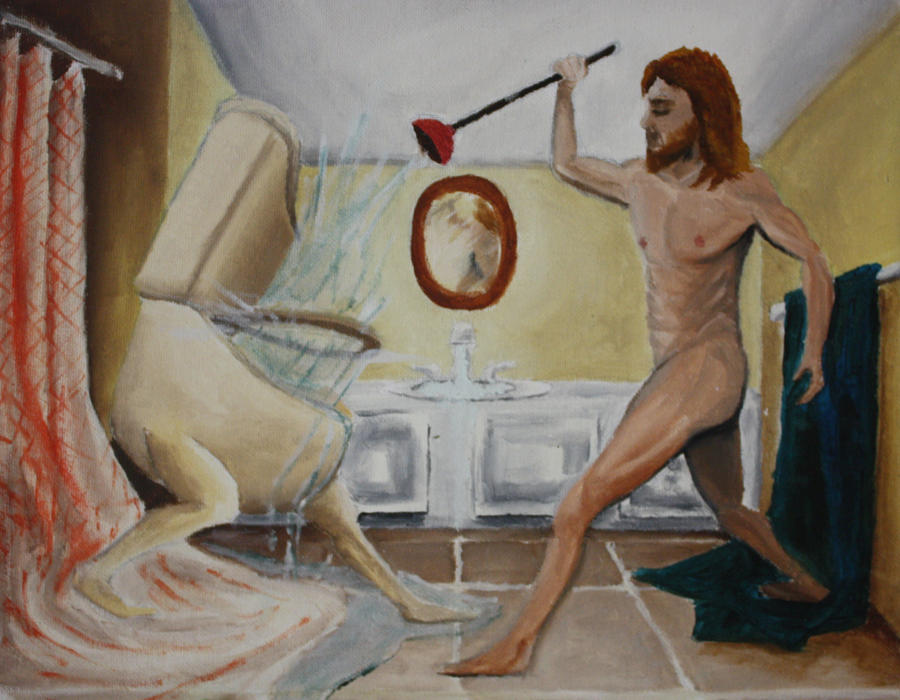crapper time
You can tell
temper of our times
in my crapper at work.
Times bowl brims
with bogpaper
and shit
Lads flush once
find it won’t go,
flush again.
Have done
leave without washing hands.
I need to tell ’em
‘pump it lad’
but we’re all
timed by work
computer
and three times late
two warnings, late
again ‘investigation’
in another room.
Late again, dismissal.
They march you to gates.
temper of our times
in my crapper at work.
Times bowl brims
with bogpaper
and shit
Lads flush once
find it won’t go,
flush again.
Have done
leave without washing hands.
I need to tell ’em
‘pump it lad’
but we’re all
timed by work
computer
and three times late
two warnings, late
again ‘investigation’
in another room.
Late again, dismissal.
They march you to gates.

Thomas Crapper apprenticed himself to his brother George, a plumber in 1853 and set himself up as a sanitary engineer in 1861, with his own brass foundry and workshops. He was the 1st to set up public showrooms to display sanitary ware and advocated installing toilets inside people's homes. Although John Harrington invented the flushing toilet in 1596, it was not until 1778 that Joseph Bramah patented the 1st practical water closet. George Jennings invented the flush toilet in 1852. However, Crapper had patents for 3 improvements, especially the floating ballcock for filling water tanks without overflow or backflow. (His nephew and successor George patented an improved siphon mechanism that started the water flow.) "Crappe" meant waste or rejected matter in Old French, but "crap" was a term for chaff and weeds or other rubbish until 1845, when it was adapted to bolily waste (as "crapping ken," a synonym for privy). American soldiers in London during World War I saw the Crapper brand prominently displayed on manholes and cisterns throughout the city and began calling similarly-branded toilets "crappers."
ReplyDelete